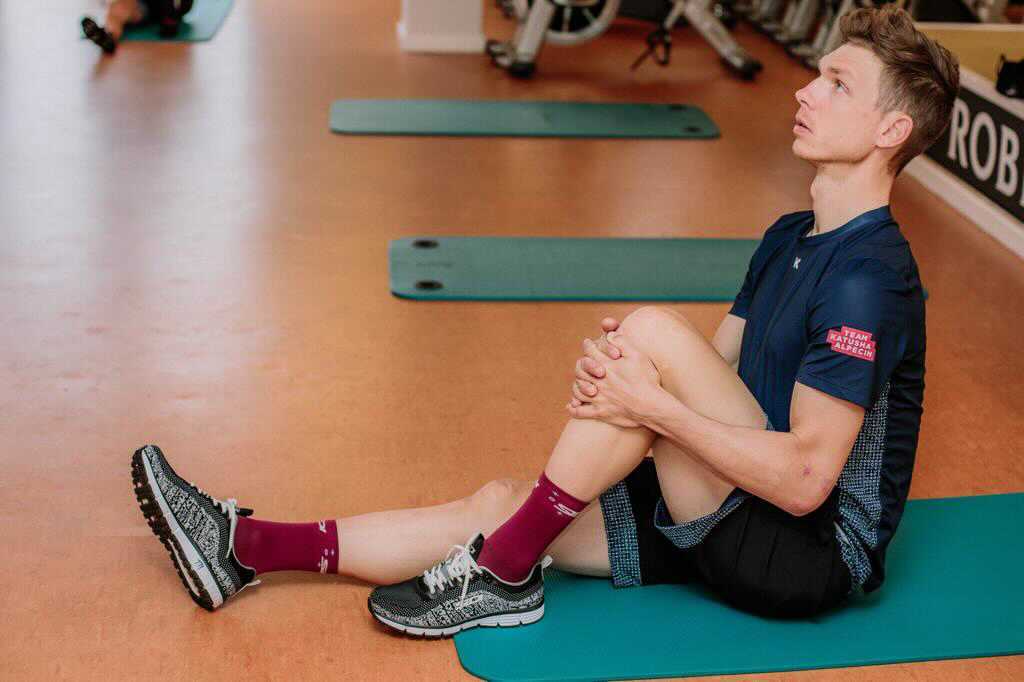Kinesis Sports Therapy highlight some of the most common injuries that come with cycling and what you can do to remedy them.
More and more of us are taking up cycling for sport and recreational activity. Reaching titles Nationally and Internationally are some goals of athletes we have worked with within our Clinic. Whatever your goals or ambitions, we can all suffer similar injuries, from a fall to overtraining. With the guidance of bike fit experts in our local shop and regular treatment we hope to only experience mild symptoms. Those who take their body to the next level need to be able to spot when an injury may occur. It is important to regularly screen these athletes. The most common cycling injuries we see in the clinic are; shoulder (coupled with back pain), hip and knee. There are more, but let us concentrate on these for now. . .
COMMON CYCLING INJURIES
1) SHOULDER PAIN: Acromioclavicular Joint Pain (a.k.a. ACJ Sprain)

Signs, Symptoms and Causes: Typically occurring as a result of a fall in a race. The joint capsule can become damaged, especially with multiple falls leading to reduced shoulder range of movement and altered function.
What can I do? Seek Medical attention, determine the extent of injury. Following an assessment, if appropriate, help the joint space via mobilisation/ kinesiotaping methods. Strengthening the Rotator Cuff, Biceps, Pecs and Upper Trapezius following extensive Scapular retraining, has been very useful in our Clinic.
2) BACK PAIN
Signs, Symptoms and Causes: Chronic lower back pain is usually as a result of prolonged flexed position and lack of Lumbar Spine mobility. Shoulder Flexion and Thoracic Spine Extension are interconnected. During Time-Trial (TT) training, the Thoracic Spine and shoulders are put under pressure to be the most aerodynamic. During sessions with our Sponsored Athlete, we’ve undertaken a lot of Thoracic mobility thus, creating a better position, by performing regular Thoracic Spine Mobilisations which are assisted with prehabilitation. All have vastly reduced his shoulder & back pain.
What can I do? Adjusting the saddle angle has been proved to be effective at reducing symptoms. Also check the bars in relation to the saddle position and height. It is important that if we have a desk bound job, we regularly do mobility and strength exercises to help reduce the effects of long-term sitting. Back pain can be linked to our next injury. . .
3) HIP PAIN: Sciatica

Signs, Symptoms and Causes: As a nation we sit down, a lot! Then we ride (again sitting down), asking our body to go through a range of movement that when we work or are studying, we have shortened. Impingement of the Sciatic nerve at the buttocks causes sensations down the leg. The nerve splits at the knee into Tibial Nerve and Peroneal Nerve. Depending on which bias you have, pains either travel down to big toe (Tibial) or little toe (Peroneal). Your Therapist will establish this.
What can I do? Our Sponsored Athlete has found benefits to cross train with running. Since we use the Glutes and Hamstrings more! Releasing Piriformis and Glutes together with re-educating the Glute/ Hamstring firing pattern have been proved effective during training and an invaluable addition along with pre-activation work.
4a) KNEE PAIN: Greater Trochanteric Pain Syndrome

Signs, Symptoms and Causes: Front and outer hip pain which can travel down the thigh. Commonly caused by tightness and decreased flexibility in Hip Flexors, we can irritate our Bursa located at the front of the hip.
What can I do? Check saddle height and add mobility and strength exercises to counter this and tolerate load, especially on TT training. During this the hip angle is decreased stressing the Glutes and Hamstrings further. Appropriate co-ordination drills and conditioning will help ease symptoms.
4b) KNEE PAIN: Patellofemoral Pain Syndrome

Signs, Symptoms and Causes: Repetitive flexion/ extension causes knee pain. Stiffness can be felt during sessions or next morning. Commonly seen across sports but particularly cycling based sports. Spin classes, depending on level, can also cause injury. Muscle imbalances of thigh and hip can lead to injury too. The force generated by Quadriceps muscle contraction during the downstroke (knee extension) is translated to the patellofemoral joint.
What can I do? Check saddle height, especially if you do classes, don’t just get on the saddle and begin. It can be too high/ low/ far forward. Get into the routine of regular knee and hip stretches to help between sessions with your Therapist. It is also worth noting how much play is in the cleat set up too. Overtraining is usually the main cause, so ensure you have appropriate rest days especially if you have increased training load or introduced hill efforts. Remember our most important training is rest!
4c) KNEE PAIN: Patella Tendinopathy
Signs, Symptoms and Causes: Tenderness under the knee cap after riding and/ or during the first few minutes/ miles. Quadricep and Hip Flexor tightness and often Patella stiffness contribute. During the cyclical action (knee extension), the tendon becomes irritated and causes pain.
What Can I do? Improving joint motion (Manual Therapy) and muscle imbalances; releasing Quadriceps and Hip Flexors. Loading the tendon to tolerate load and check saddle set up are also important.
KNEE PAIN: ITB Syndrome

Signs, Symptoms and Causes: Repetitive mechanical friction between the Iliotibial Band (ITB) and the Lateral Femoral Condyle (where the ITB passes over) causes outer knee pain. Assessment can show overactive TFL, weak Glutes and Hamstrings. Overactive TFL can cause the patella to incorrectly track and rotate.
What Can I do? Release overactive muscles and engage underactive and weak muscles. The TFL/ Glute Complex is an interesting so add good co-ordination drills pre-training. Pain is reproduced at 30-degree knee flexion, so check saddle height. Ensure adequate hip stabiliser conditioning so they can take training loads.
CONCLUDING THOUGHTS. . . At Kinesis Sports Therapy, we use a variety of co-ordination training, myofascial sling work, manual therapy, re-education of key muscles to name just a few and adapting gym work all to facilitate performance and reduce risk of injury. When an athlete is fully fit methods such as Post-Activation Potentiation, improving power and contractile activity before races can be beneficial. A study showed that during a 20km TT, 6.1% of subjects reduced their completion time. An interesting thought especially for those who are power based or respond to pre-race cues.
A WORD FROM OUR SPONSORED ATHLETE. . . Treatment at Kinesis Sports Therapy has been invaluable especially pre-race putting body and mind in the best place possible to perform. The role of your Therapist becomes very much like a coach. Knowing pre-activation exercises pre-race to help muscles interact efficiently has helped a lot. Post-treatment is it important to use that as a rest day to allow muscles to reset ready for training the following day. - Andy Turner
References: Boullosa, D., Del Rosso, S., Behm, D. G., & Foster, C. (2018). Post-activation potentiation (PAP) in endurance sports: a review. European Journal of Sport Science, 18(5), 595-610. Hudson, Z., & Darthuy, E. (2009). Iliotibial band tightness and patellofemoral pain syndrome: a case-control study. Manual therapy, 14(2), 147–151. Schwellnus, M. P., & Derman, E. W. (2005). Common injuries in cycling: Prevention, diagnosis and management. South African Family Practice, 47(7), 14-19. Silva, R. A., Silva-Júnior, F. L., Pinheiro, F. A., Souza, P. F., Boullosa, D. A., & Pires, F. O. (2014). Acute prior heavy strength exercise bouts improve the 20-km cycling time trial performance. The Journal of Strength & Conditioning Research, 28(9), 2513-2520.






Share:
Making The Most Of The Off Season
Strength and Conditioning During Lockdown